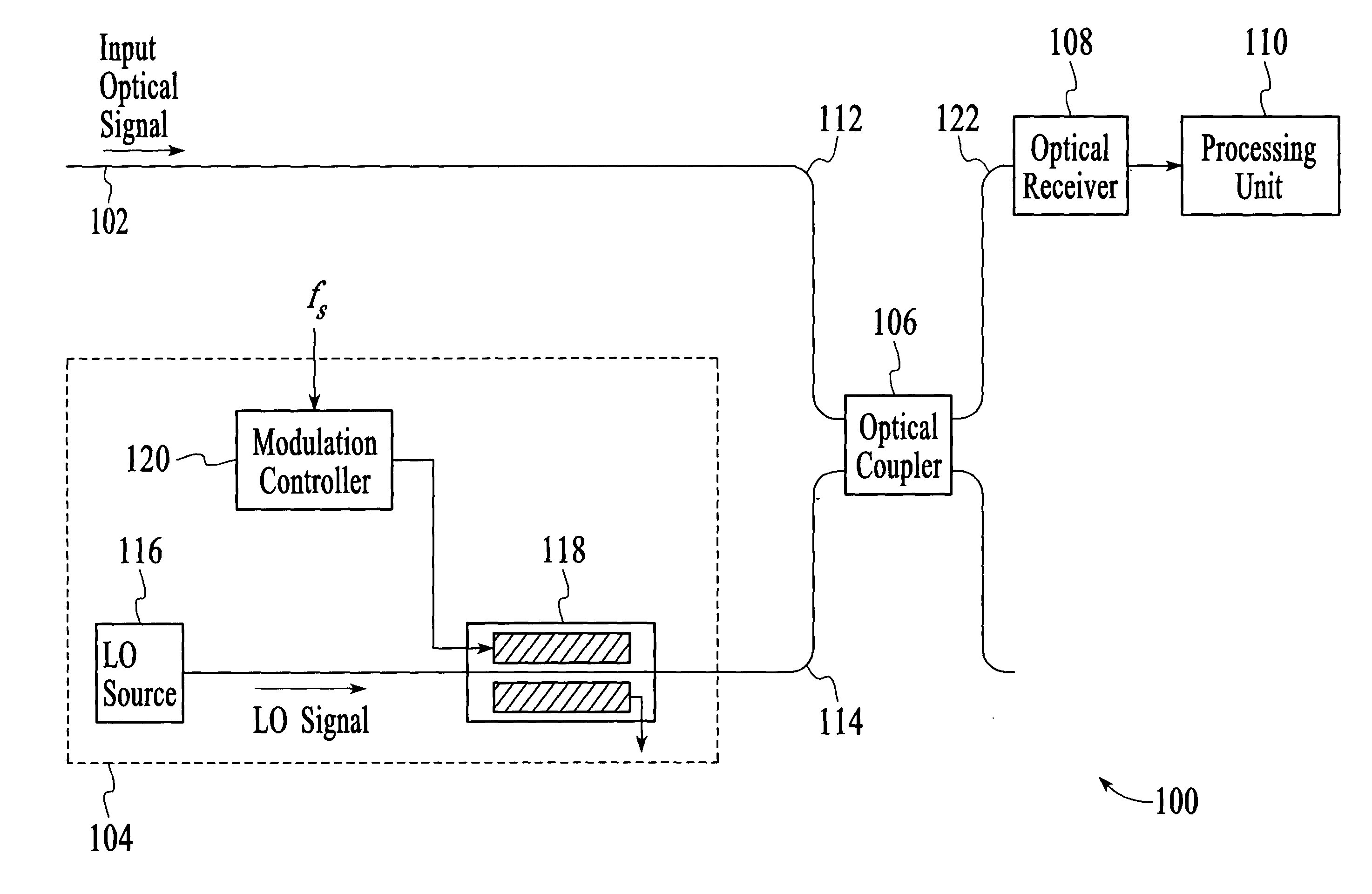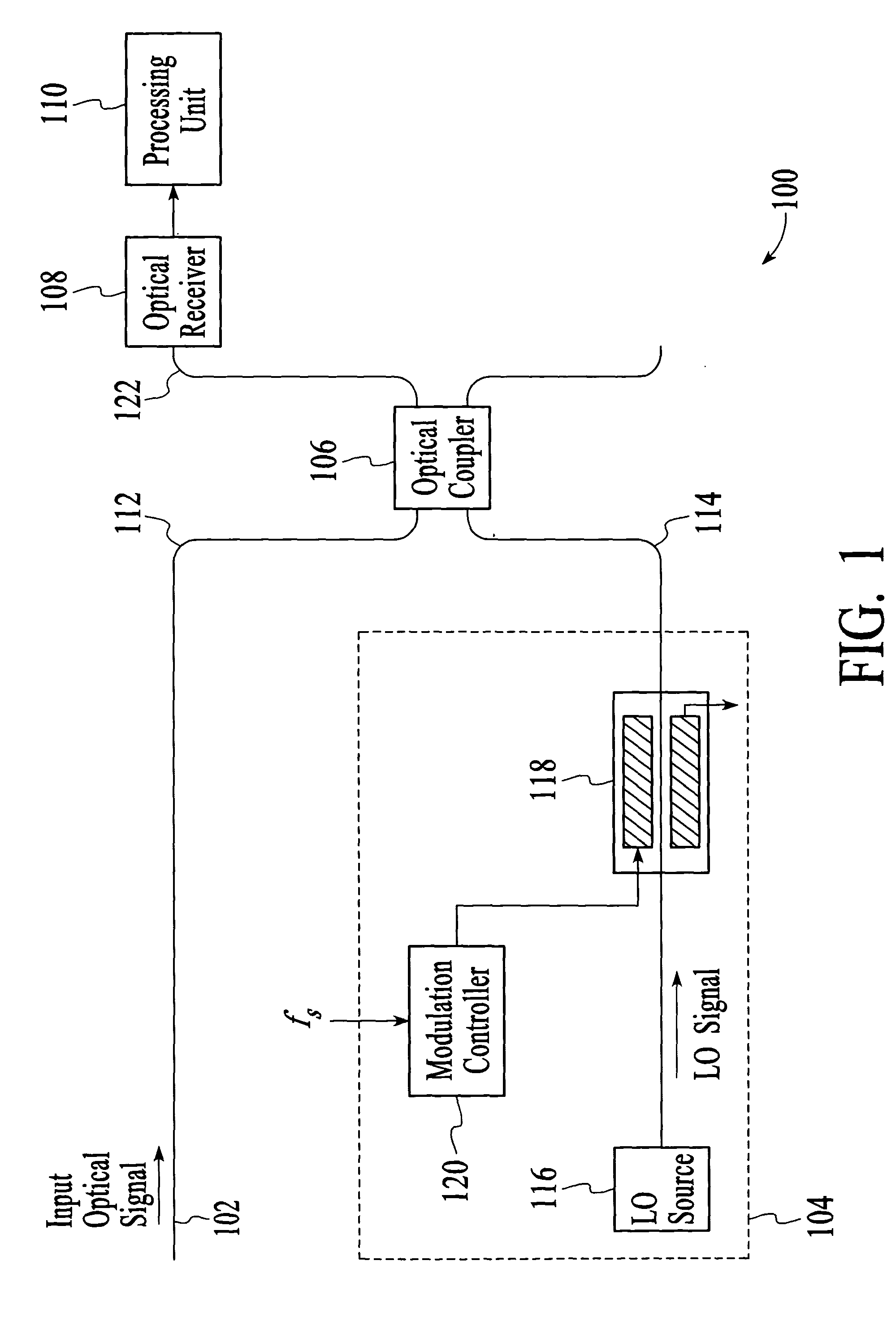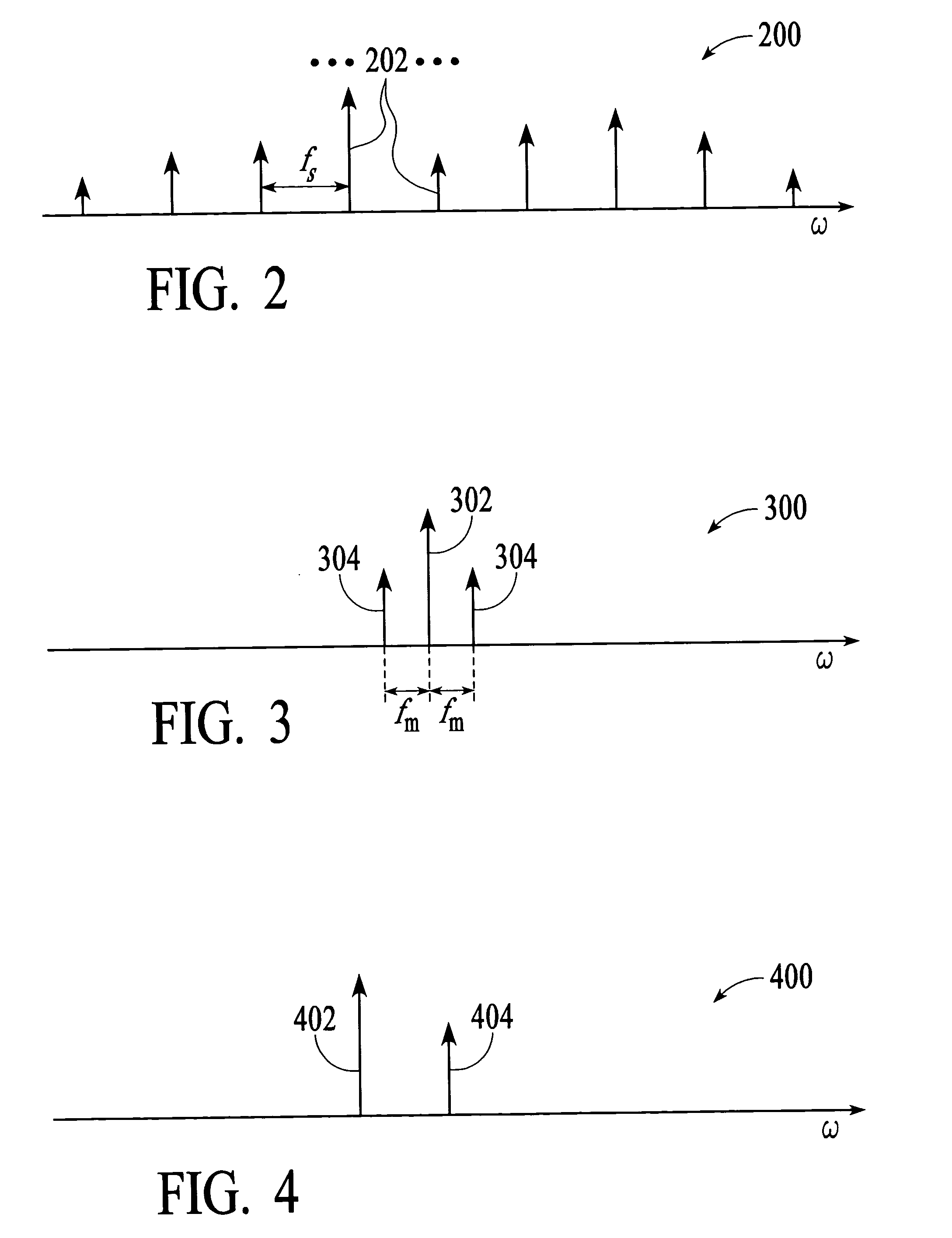Optical analyzer and method for measuring spectral amplitude and phase of input optical signals using heterodyne architecture
an analyzer and optical signal technology, applied in the field of optical analyzers, can solve the problems of increasing the cost of optical analyzers, inherently limited resolution of optical gratings, and generally expensive optical gratings
- Summary
- Abstract
- Description
- Claims
- Application Information
AI Technical Summary
Benefits of technology
Problems solved by technology
Method used
Image
Examples
first embodiment
In the invention, the equation (10) is solved using discrete phase shifts ±Δψ of the LO modulation signal. In this embodiment, the LO signal is phase modulated such that fm=fs / 2. First, the size of the inner peak is measured for an arbitrary reference phase ψ=ψr, and, then, for two other phases φ+,−=ψr±Δψ. Thus, three measurements are made to compute the phase difference Δφ. The phase shifts ±Δψ are introduced by the modulation controller 120, as described further below. Since the actual value of ψr does not matter (a delay property of the Fourier transform), it is assumed that ψr=0. From the equation (10), the following equations are obtained.
b−2=a12+a22+2a1a2 cos(Δφ+2Δψ) (11a)
br2=a12+a22+2a1a2 cos(Δφ) (11b)
b+2=a12+a22+2a1a2 cos(Δφ−2Δψ) (11c)
By subtracting the equation (11b) from the equations (11a) and (11c), and performing some trigonometric simplifications, the solution for tan Δφ is: tan Δ φ=b+2-b-22br2-b+2-b-2·tan Δψ(12)
The term tan Δψ from the equation (12)...
second embodiment
In the invention, the phase difference Δφ is measured by comparing the phase of the oscillatory behavior of the inner peaks to the phase of the reference signal at the electrical frequency fr=δf. A graphical explanation of this phase difference measurement is now described. Assume that the peaks 506 in FIG. 5C are not at the same frequency but that there is a frequency difference between the peaks equal to δf. This means that the phase modulation frequency is not equal to fs / 2 but to fs / 2+δf / 2 or to fs / 2δf / 2. Then, using the concept of FIG. 6, the phasor {overscore (a)}2 will rotate around the phasor {overscore (a)}1, as shown in FIG. 9A. Therefore, the amplitude of the resulting inner peak, which is proportional to b, will oscillate at the frequency δf, as shown in FIG. 9B. The oscillatory behavior of b(t) can then be defined by the following equation:
b(t)2=A+B cos(2πδft+Δψ), (13)
where A and B are some constants. The phase of the oscillating b(t)2 from the equation (13), as com...
third embodiment
Turning now to FIGS. 14A and 14B, the components of the modulation controller 120 and the processing unit 110 of the HOSA system 100 in accordance with the invention is shown. In this embodiment, the modulation controller 120 includes a modulation signal generator 1402 and an electrical frequency modulator 1404, as shown in FIG. 14A. The modulation signal generator 1402 provides a modulation signal at the electrical frequency fs. The electrical frequency fs may be supplied from an external source. The modulation signal at the electrical frequency fs is then phase modulated by the electrical frequency modulator 1404 at the electrical frequency fψ and supplied to the optical modulator 118.
As shown in FIG. 14B, the processing unit 110 includes a preamplifier 1406, an AM demodulator 1408, a power converter 1410, phase sensitive detectors 1412 and 1414 and a processor 1416. The preamplifier 1406 amplifies the electrical signal generated by the optical receiver 108, i.e., the heterodyne ...
PUM
 Login to View More
Login to View More Abstract
Description
Claims
Application Information
 Login to View More
Login to View More - R&D
- Intellectual Property
- Life Sciences
- Materials
- Tech Scout
- Unparalleled Data Quality
- Higher Quality Content
- 60% Fewer Hallucinations
Browse by: Latest US Patents, China's latest patents, Technical Efficacy Thesaurus, Application Domain, Technology Topic, Popular Technical Reports.
© 2025 PatSnap. All rights reserved.Legal|Privacy policy|Modern Slavery Act Transparency Statement|Sitemap|About US| Contact US: help@patsnap.com



